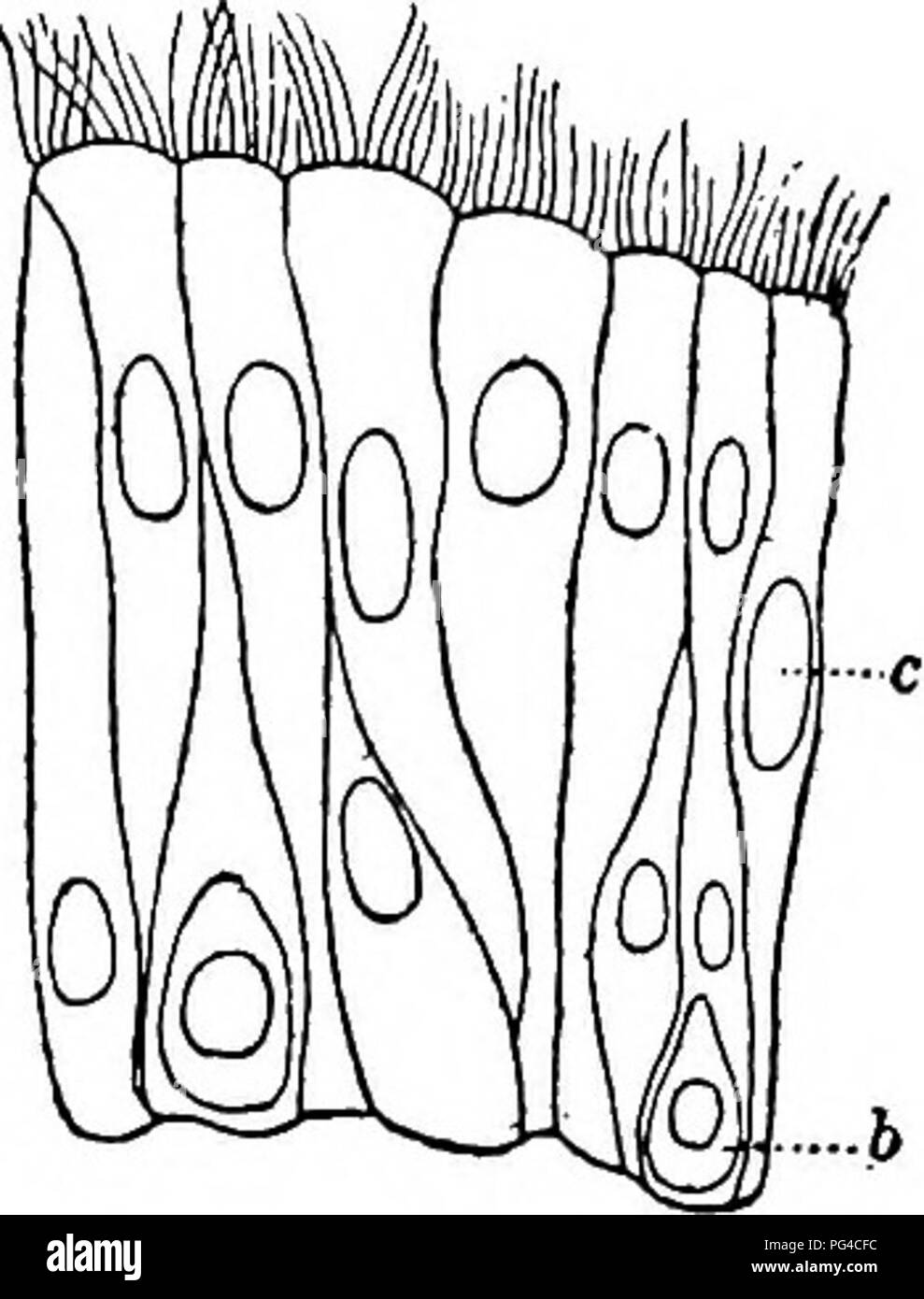. Smell, taste, and allied senses in the vertebrates . Senses and sensation; Vertebrates. ANATOMY OF THE OLFACTORY ORGAN 27. ous branched alveolo-tubular glands which, contain both mucous and serous cells. The conchsB of the respiratory region have long been known to be extremely vascular and to be possessed of a structure like that of erectile tissue. This is especially true of their edges. They can be excited through reflex channels to considerable enlargement and the swelling thus produced may be suffi- cient to close completely the respir- atory passages. It is believed that this high vasc

Image details
Contributor:
Central Historic Books / Alamy Stock PhotoImage ID:
PG4CFCFile size:
7.1 MB (231 KB Compressed download)Releases:
Model - no | Property - noDo I need a release?Dimensions:
1379 x 1812 px | 23.4 x 30.7 cm | 9.2 x 12.1 inches | 150dpiMore information:
This image is a public domain image, which means either that copyright has expired in the image or the copyright holder has waived their copyright. Alamy charges you a fee for access to the high resolution copy of the image.
This image could have imperfections as it’s either historical or reportage.
. Smell, taste, and allied senses in the vertebrates . Senses and sensation; Vertebrates. ANATOMY OF THE OLFACTORY ORGAN 27. ous branched alveolo-tubular glands which, contain both mucous and serous cells. The conchsB of the respiratory region have long been known to be extremely vascular and to be possessed of a structure like that of erectile tissue. This is especially true of their edges. They can be excited through reflex channels to considerable enlargement and the swelling thus produced may be suffi- cient to close completely the respir- atory passages. It is believed that this high vascularity of the respira- tory region is concerned with the moistening and warming of the current of respiratory air. The secretions of this portion of the nose are also believed to be inimical to pathogenic germs and thus to afford a protection to the deeper parts against the invasion of disease. The olfactory region in man is yellowish in color as it is in the calf and in the sheep. In the dog and the rabbit it is of a more brownish hue. According to the older anatomists it was supposed to extend in man over the dorsal half or even more of the nasal cavity. Von Brunn (1892), however, claimed by a reconstruction from sections that the olfactory epithelium was much more restricted than had been originally supposed. According to this author only a small portion of the superior concha and a correspondingly small part of the nasal septum represent the unilateral area of distribution of the olfactory nerve. This area in one subject measured 257 sq. mm. and in an- FlG. 3.—Respiratory epi- thelium from the nasal cavity of a young pig; b, basal cell; c, ciliated cell. After Alcock, 1910, Fig. 2.. Please note that these images are extracted from scanned page images that may have been digitally enhanced for readability - coloration and appearance of these illustrations may not perfectly resemble the original work.. Parker, George Howard, 1864-1955. Philadelphia ; London : J. B. Lippinco